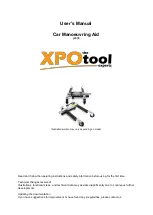
7.2.2 - Reporting range
The reporting range in the columns 2, 3 and 4 are in millimeters. The start of the measure range is at the
top of the meniscus down to 140 mm. If the detection of cells/plasma is over 140 mm then the report will be
>140.
7.3 - Limit error settings
When an option (at Limit error settings) is set to
YES
and this limit error occurs, results will be printed/send
to the LIMS. Together with the sedimentation time and dilution rate (which are still printed at the usual
position), the operator/analyst can see what caused the error and may or may not use the ESR values which
are preserved in the error message.
When an option is set to
NO
and this limit error occurs, the fields for
30 min ESR, 60 min ESR and the
temperature corrected ESR are filled with spaces and thus results are not printed/send to the LIMS.
The error message in the error field (column 10) indicates that at least one of the limits (ESR time, dilution
rate, column height, bubbles on top, hazy aspects and temperature) has been exceeded.
Description of the error message
L_err(hhh/www/ttt/ccc)
:
▪
L_err
means it is a "limit error"
▪
hhh
is the 30 minutes ESR
▪
www
is the 60 minute ESR
▪
ttt
is the temperature corrected 60 minute result
▪
ccc
is the column height
Example of a limit error message:
▪
L_err( 42/ 84/ 75/200) means 42 mm in the 30 minute method and temperature correction 75 with a
correct column height.
▪
L_err(---/ 84/ 75/200) means 84 mm in the 60 minute method and temperature correction 75 with a
correct column height.
Note:
If limit error filters in the LIMS are not corresponding with the limit error settings on the instrument it
is possible that not all expected results are send to the LIMS.
7.4 - Reporting range
The reporting range in the columns 2, 3 and 4 are in millimeters. The start of the measure range is at the
top of the meniscus down to 140 mm. If the detection of cells/plasma is over 140 mm then the report will be
>140.
7.5 - Aspect Hazy
The automatic reading of the Westergren sedimentation pipettes is performed by moving an optical sensor
along the pipettes. While the sensor is moving, it is taking a reading every 0.25 mm. The sensor is reading
the absorption of infrared light through the Westergren pipette filled with blood. From these readings, values
at a number of absorption levels are determined. All absorption figures are relative to the darkest and
lightest reading (darkest = 100 % and the lightest = 0 % absorption respectively).
By definition the levels are:
87.5%
Cells/ plasma separation
Reporting
62
MRN-164_2-EN Version 1.08 Starrsed TL
Содержание STARRSED TL
Страница 1: ...Instructions for Use Starrsed TL MRN 164_2 EN Version 1 08...
Страница 2: ......
Страница 7: ...Index 136 Contents MRN 164_2 EN Version 1 08 Starrsed TL 7...
Страница 13: ...Graphic showing typical absorption values of a sample Introduction MRN 164_2 EN Version 1 08 Starrsed TL 13...
Страница 105: ...7 8 9 10 11 12 13 Clean liquid separator Removing Work instruction Interrliner MRN 164_2 EN Version 1 08 Starrsed TL 105...
Страница 116: ...Work instruction Interrliner 116 MRN 164_2 EN Version 1 08 Starrsed TL...
Страница 120: ...Work instruction Interrliner 120 MRN 164_2 EN Version 1 08 Starrsed TL...
Страница 121: ...13 Appendix for Interrliner Appendix section Appendix for Interrliner MRN 164_2 EN Version 1 08 Starrsed TL 121...
Страница 125: ...TLAX079200 STLAX079200 Tubing set Starrsed TL Appendix for Interrliner MRN 164_2 EN Version 1 08 Starrsed TL 125...
















































